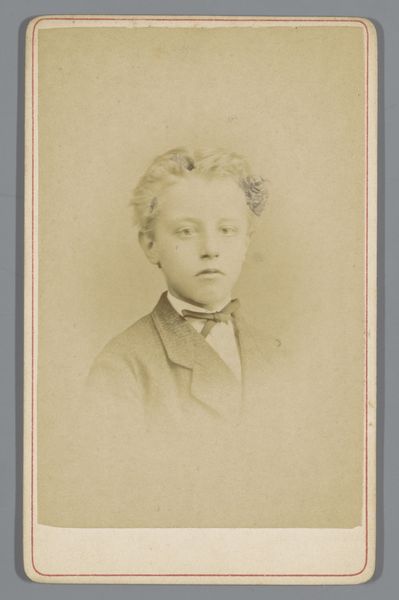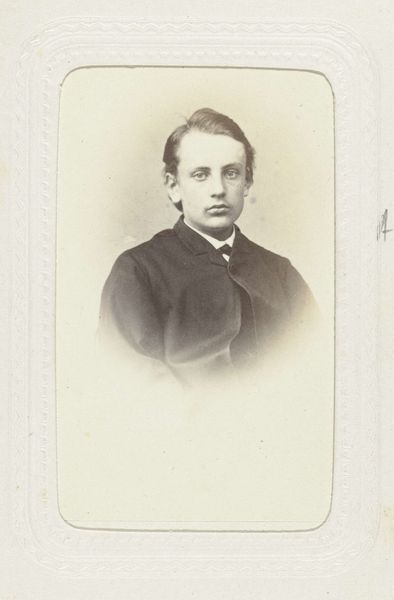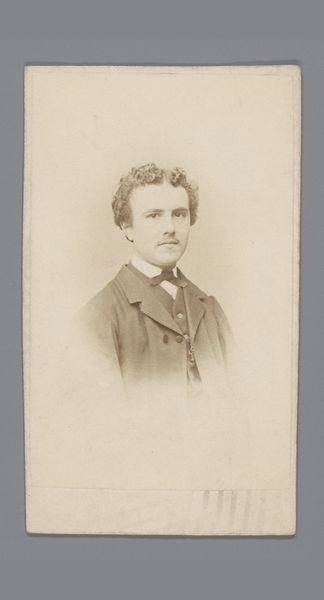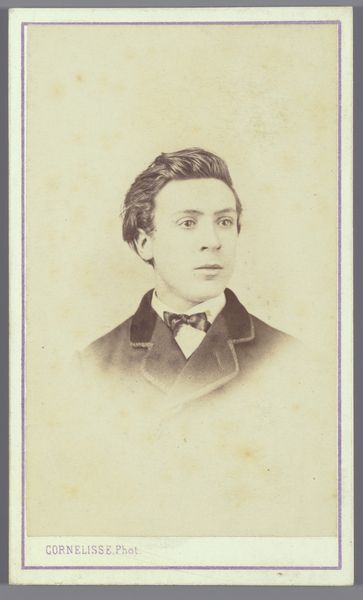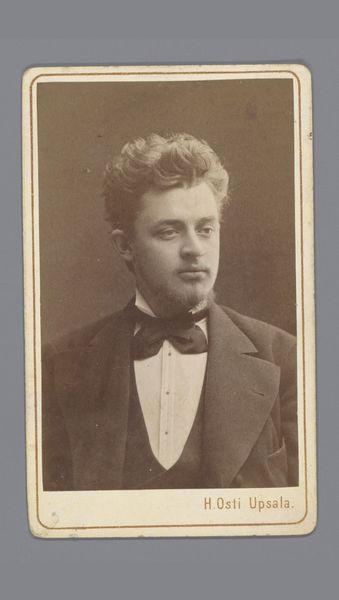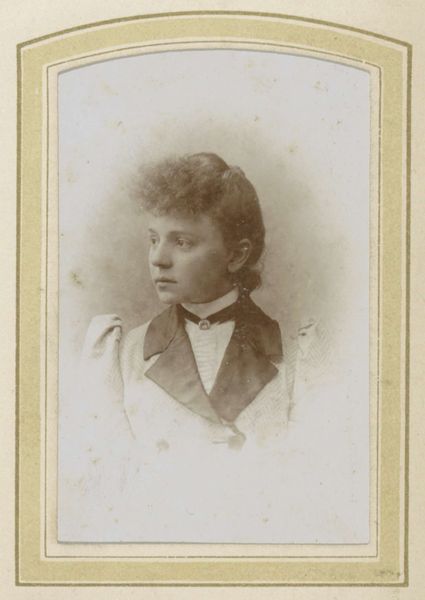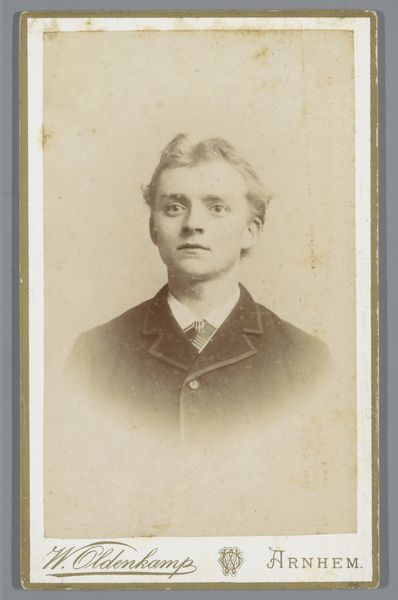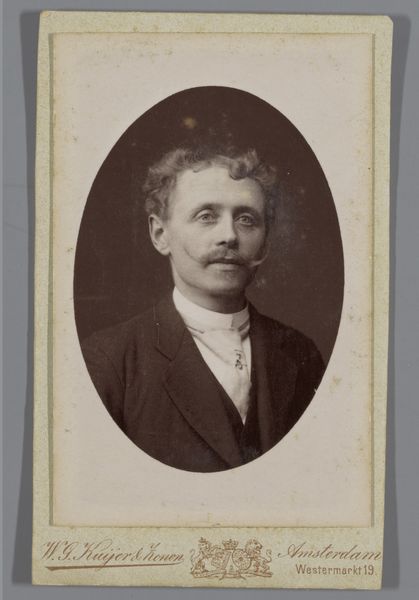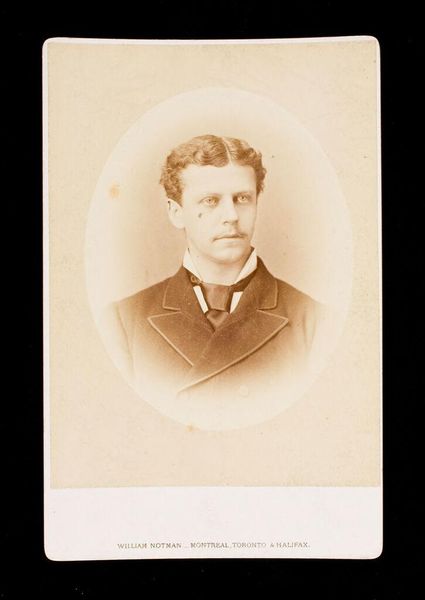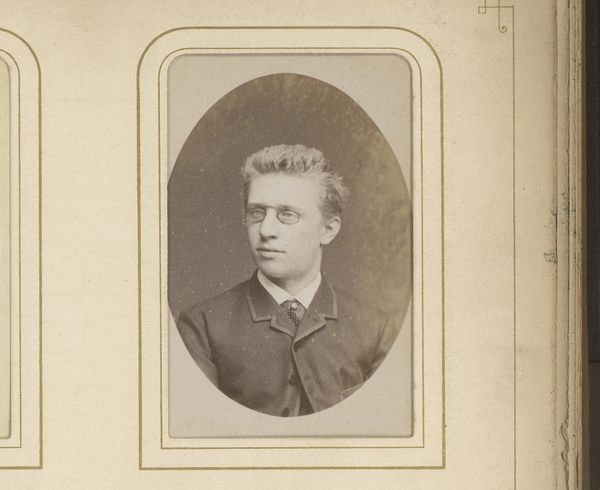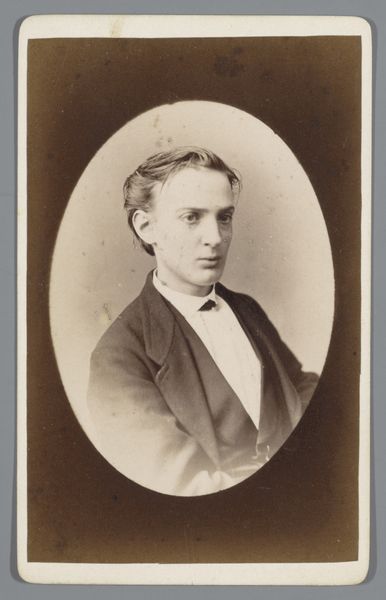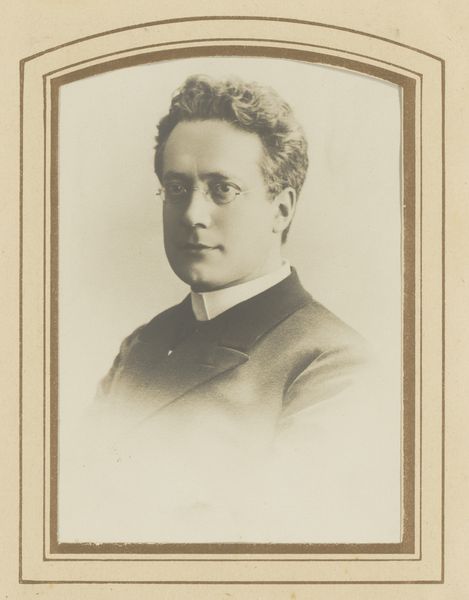
photography, gelatin-silver-print
#
portrait
#
photography
#
gelatin-silver-print
#
19th century
Dimensions: height 87 mm, width 55 mm, height 105 mm, width 64 mm
Copyright: Rijks Museum: Open Domain
Curator: Wegner & Mottu, this photographic portrait likely captures a young man sometime between 1864 and 1887. It's a gelatin-silver print currently residing in the Rijksmuseum collection. What's your first impression? Editor: Intimate. Almost melancholic. The tight framing emphasizes the sitter's face, and that sepia tone gives it a beautifully aged feeling, like uncovering a hidden story. It speaks to a particular societal moment of image consumption and display. Curator: Exactly! We must remember how revolutionary photography was at the time. It wasn't merely about documentation, but a form of democratized portraiture. Access to creating and owning images became possible for people outside the traditional elite circles, reflecting shifts in social class and identity construction. Consider the labor involved in producing these images. Gelatin silver prints replaced earlier methods for increased speed of image production to reach larger markets. Editor: The production methods have significance here, thinking about how portrait studios became these interesting spaces where gender and class performances occurred. How the sitter chooses to be represented matters, from the clothes he wears to his very gaze and posture, suggesting aspirations. And the choice to have the portrait taken indicates self-awareness, which makes you question the role of photography at that time and still relevant today. Curator: And even the format is meaningful. Think about how these smaller photographs were often kept in albums or lockets—carried on one's person. This emphasizes photography's role not just in recording appearances, but in creating and preserving memories of social interactions. Editor: The rise of portrait photography coincides with the development of consumer culture and new kinds of celebrity, which speaks to evolving gender roles. Did he commission it for himself, as a keepsake for a loved one, or for professional means? Whose gaze was he trying to court? Curator: Those are essential questions, thinking about the historical context. Photography allowed greater agency of self-representation at a fraction of the monetary price but demanded social currency and a visual language beyond basic literacy. Editor: Exactly. It serves as a compelling invitation to consider photography's complex entanglement with broader social changes. Curator: Looking closely reveals layers about not only photography as a technology, but as a reflection of an epoch, shaping selfhood and how history remembers us. Editor: Indeed. From a seemingly simple image emerges complex questions around power, labor, representation, and remembrance that can affect the collective narrative in our contemporary lives.
Comments
No comments
Be the first to comment and join the conversation on the ultimate creative platform.

